Vegetables to plant in March: top 10 crops to sow and grow
Get stuck into the best vegetables to plant in March, and enjoy a feast for the senses with baby carrots, snow peas, tiger nuts and more


Our desire to pick the best vegetables to plant in March is fuelled with expectation and promise. For the eager gardener, growing projects step up a gear as we turn from the final weeks of winter and look forward to spring. This is true not just in terms of sowing and planting possibilities, but also in terms of how we need to divide our attention and make the best choices for our plots and growing spots.
As we head into the month of March in the vegetable planting calendar, we can pick and choose between starting crops off under glass or out in the ground. We can continue to sow indoors for crops that benefit from longer sowing times (peppers or tomatoes) or the more reliable climates that a greenhouse or windowsill can provide. But we can also start direct sowing in situ or in seedbeds or under cloches for crops that prefer not to be handled too much (like carrots, parsnips, and optionally peas and radish).
They say March is the month that comes in like a lion and out like a lamb. Well, this is a unique time to be starting off brassica beasties like purple sprouting and architectural divas like globe artichokes, while also nurturing gentler croppers such as snow peas and skirret so they quickly romp away with the right protection and cultivation.
Sustain your kitchen garden with the top vegetables to plant in March
Want to know the best vegetables to plant in March? This guide’s got it all, from quick-and-easy snow peas to slow-maturing black radish that are truly worth the wait. From teeny tasty tiger nuts to mammoth globe artichokes, this essential run-down can help you kickstart all kinds of kitchen garden goodies.
So make March your month for taking your kitchen garden ideas to the next level – and get set for a truly rewarding season of homegrowing.
1. Chantenay carrots
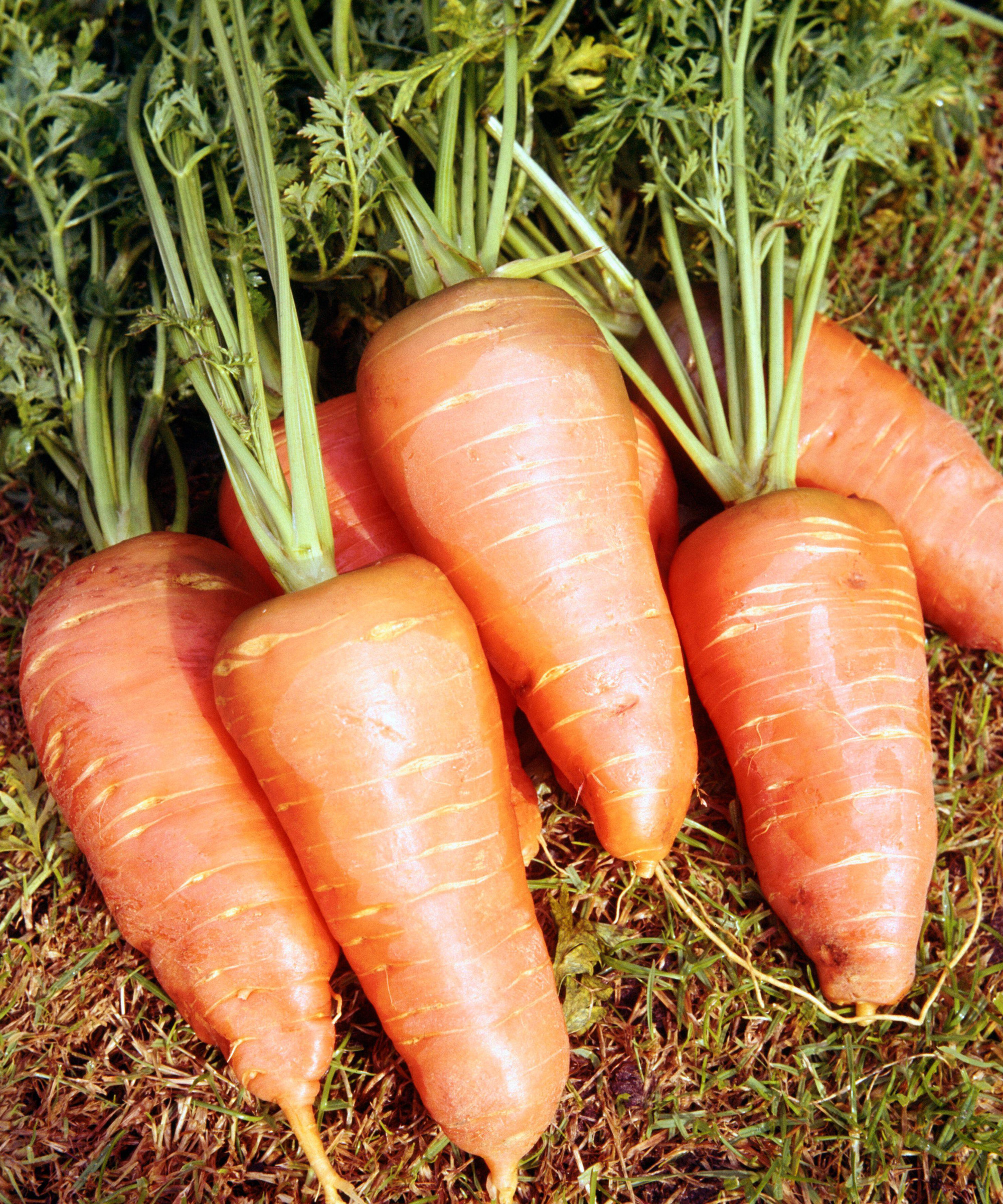
Short, stout, stubby and oh-so-sweet, delicious Chantenay carrots are the edible manifestation of the maxim ‘less is more’. If you’re keen to know how to grow carrots, our first pick for vegetables to plant in March is a crop that suits any growing condition and is perfect for early sowings. Chantenays are perfect for direct sowing as the ground starts to warm up outside (use cloches for less-predictable weather). Planting in situ also frees up space indoors for other veg-growing commitments.
Look for a sunny position in fertile, light, well-drained soil. That said, thanks to their diminutive shape, Chantenays (Daucus carota subsp. sativus) are also great for rocky and heavy soils. The trick, says Chris Bonnett of Gardening Express, is to sow the seed so there is a good amount of visible space between each seed. Roughly 2in (4-5cm) will do, sown 1cm into the soil. Sow more than you need, as germination can be patchy. Give six hours of sunshine a day, thinning at least twice as they develop, keep soil moist and mulch to suppress weeds.
Chantenays are ideal for container gardening ideas where they can be tucked alongside peppers. They make great companion plants for onions and are good news if you know how to grow mint, which deters carrot root fly.
Choose varieties such as ‘Chantenay Red Cored’, ‘Short and Sweet’, ‘Royal Chantenay’ and ‘Baby Cascade’, and get ready to harvest 10-12 weeks after sowing. Crunch time will be bliss.
2. Purple sprouting broccoli

Calling all broccoli lovers! One of the most vibrant vegetables to plant in March is this prolific purple beauty. With its masses of tender tinted florets, purple sprouting (Brassica oleracea var. italica) is a delicious and intriguing addition to the kitchen garden. However, it takes a while to develop and mature – hence why it’s so important to start yours in March. So if you’re keen to know how to grow winter brassicas, make this one of your essential sowings for spring.
As Amateur Gardening’s expert Lucy Chamberlain explains, you’ll need to wait up to a year for your own succulent spears, but it’s worth the wait. Sow in modules under cover and transplant out mid-June. Just bear in mind that your plants need considerable space to bulk up. ‘The key is generous nitrogen and water,’ says Lucy. ‘Mix ample organic matter and slow-release feed into the planting site, irrigate well in dry spells, and cloak in butterfly netting to protect from pigeons and cabbage whites.’
Top purple picks include high-yielding ‘Claret’, early-maturing ‘Santee’ and heat-tolerant ‘Purple Rain’. If you know how to grow garlic or how to grow thyme, this is an ideal companion plant. It also thrives with celery, rhubarb, beetroot and rosemary. Harvest when shoots are tender (before flowers open) to guarantee the richest edible bounty.
3. Skirret

Prized by Roman Emperor Tiberius, popular in Mediaeval times and adored by the Tudors, the skinny root clusters of Chinese skirret (Sium sisarum) seem a bit unusual, it must be said. Harvests look like bleached rastafarian dreadlocks, but they taste sublime: sweet, mild and delicious, sautéed, raw or roasted.
Sow this hardy, cool-season root vegetable under glass in modules or a deep pot in March to transplant outside into final positions in June, or plant one-year old crowns direct in the ground where they will grow (spacing 12in/30cm apart). Skirret is a moisture-loving crop and loves a sunny position and a rich, free-draining soil. Make sure it has plenty of compost, water frequently and add a mulch to retain moisture and suppress weeds.
Skirret is also a pretty plant if you’re looking to design a potager garden – over summer, the dancing umbels of fluffy white flowers are beloved of hoverflies. However, removing flower stems helps focus resources on the crops. Bundles of roots develop just below ground level in autumn. Lift perennial clumps in autumn when 6in (15cm) long, separate out a few roots and replant the rest to grow future finger-sized feasts.
4. Black radishes
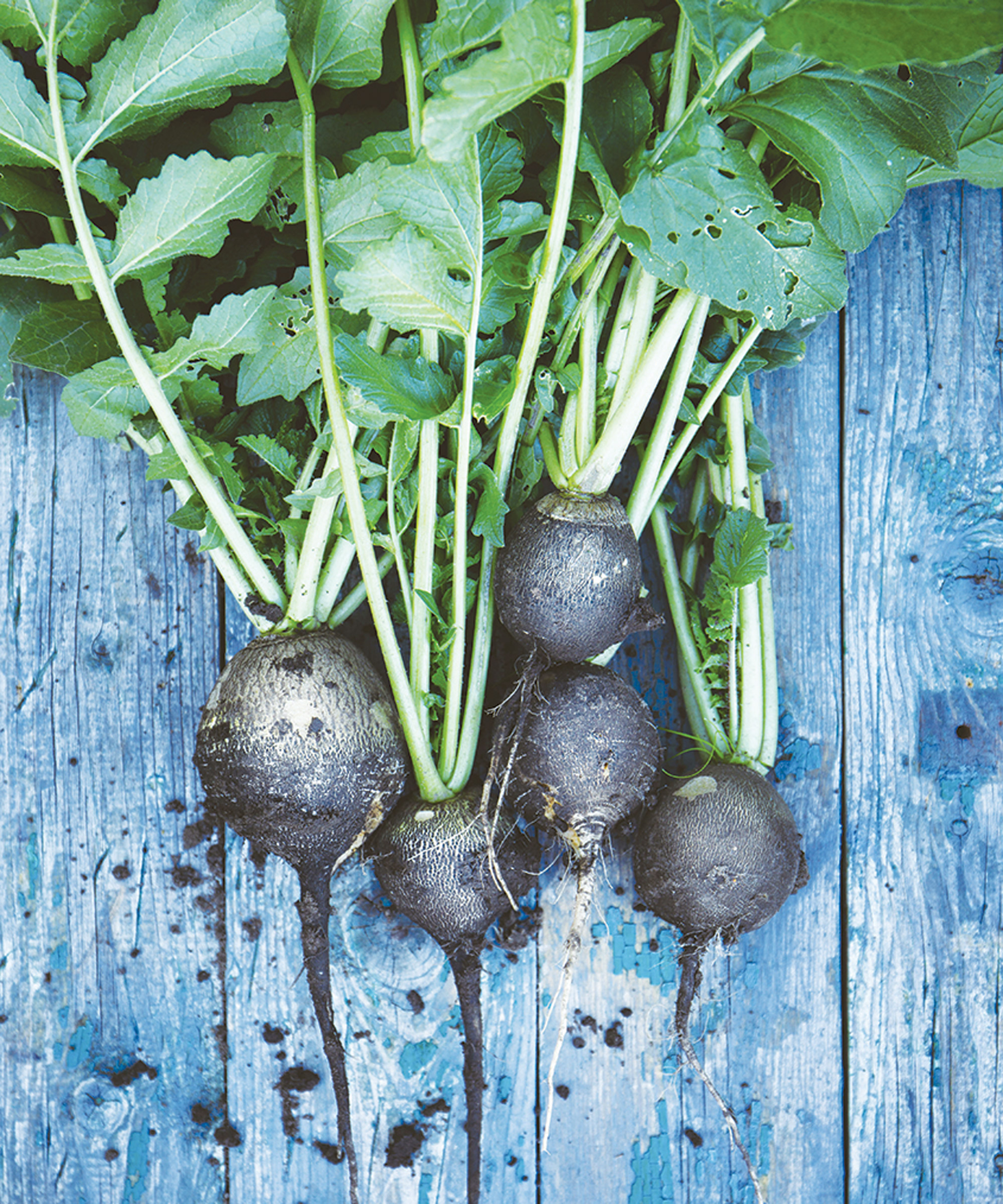
If you enjoy the peppery punch of red radishes and fancy something a little bit different, you’ll love our next choice of vegetables to plant in March. Black radishes (Raphanus sativus niger) are ebony parcels of densely packed flavor, like little turnips dropped in charcoal. Yet crack open these peppy spicy roots and the insides are bright white. Our favorite variety, ‘Black Spanish’, is a gold standard for the crispy, eye-watering intensity that typifies this inky black beauty.
For anyone who likes growing radishes, these heirloom crops – aka black mooli or Spanish radish – are just as easy to grow. They just take three times longer to mature than their rosy cousins, which is why it’s wise to start them now.
Black radishes are some of the best vegetables to grow in raised beds and can be started in situ from March, sown an inch apart and an inch deep. Pick an area with six hours of sunshine a day, use well-draining soil and water well in dry weather. Or grow them in containers, sowing thinly and keeping the compost moist. They make excellent companion plants for peppers and work well interplanted around slow-germinating parsnips and onions.
Black radishes are believed to help stave off infection, lower cholesterol, promote healthy digestion, detoxify the liver, boost the immune system and treat gallstones. Even the leaves of this kick-ass crop have antioxidant properties.
5. Snow peas (mange tout)
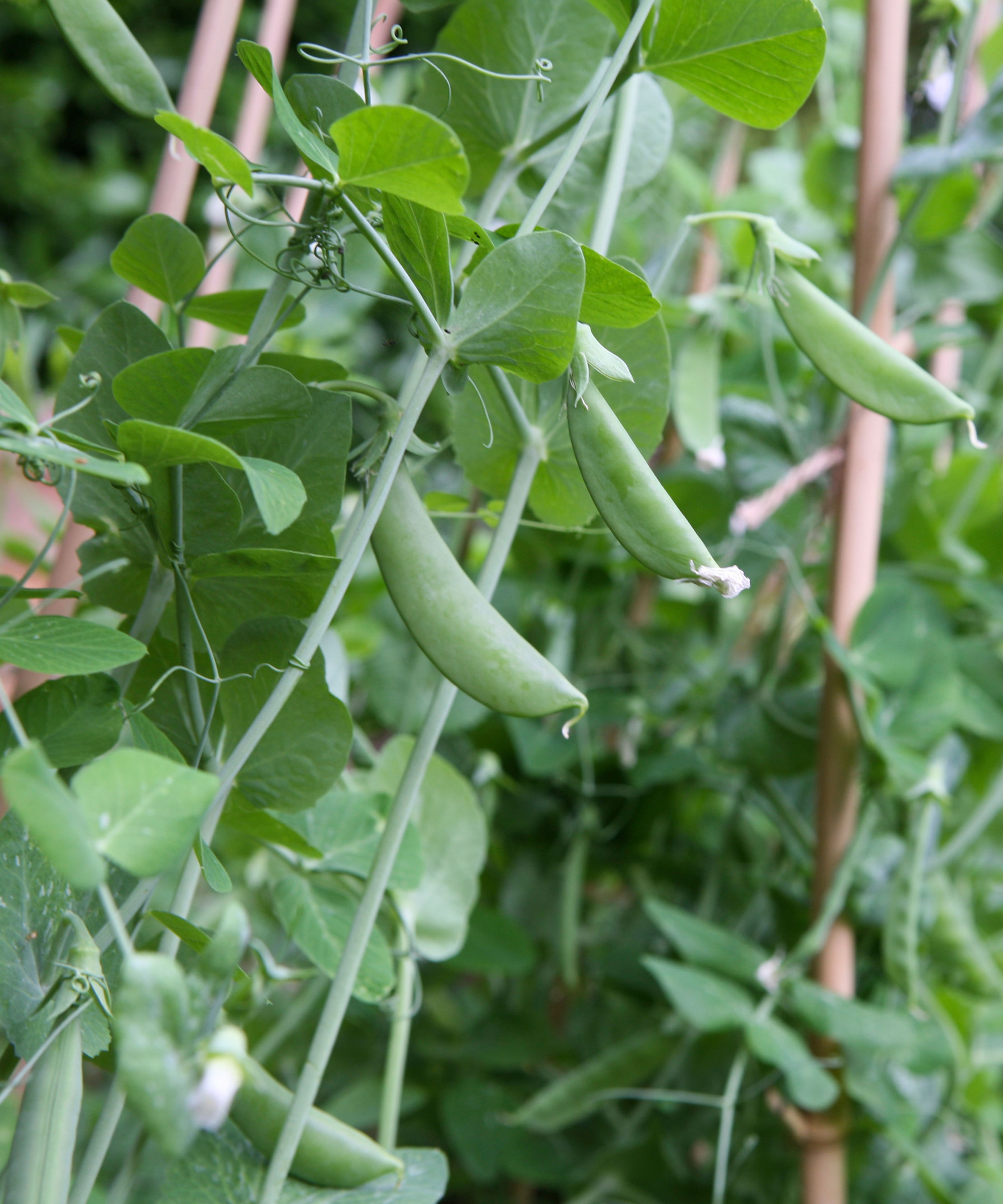
After what feels like a never-ending winter, the promise of fast-growing greens is a heady prospect for the avid gardener. All peas can be sown and planted out while it is cool: the beauty of snow peas with their flat edible pods is that they can be brought to harvest quicker. You can gorge on their slender crunchy sweetness early, and often.
As well as being some of the easiest vegetables to grow, they are some of the most efficient. Snow peas can be harvested 60 days from sowing and sown four weeks before last frosts.
Sow undercover in a length of guttering, or directly into the soil in drills 2in/5cm apart (with a cloche, cold frame or fleece handy). You just need to make sure snow peas (Pisum sativum var. saccharatum) have time to mature while it is still cool. This is why it pays to start them in March. As long as you avoid planting in wet, cold soil (keep to ground temperatures of 40-60˚F/4-15˚C), these peas are pretty chilled about growing conditions. Just give them seven hours of daily sunlight and an inch of water a week, and then keep sowing in batches for a continuous harvest.
Some snow pea varieties are compact, but climbing types will benefit from well-supported trellis ideas, twiggy A-frames, poles with pea netting, or climbing plant support ideas like wigwams. Beautifully named options include ‘Green Beauty’ with its purple flowers, miniature ‘Sugar Daddy’, wilt-resistant ‘Snowbird’ and large-podded ‘Mammoth Melting Sugar’.
6. Globe artichoke
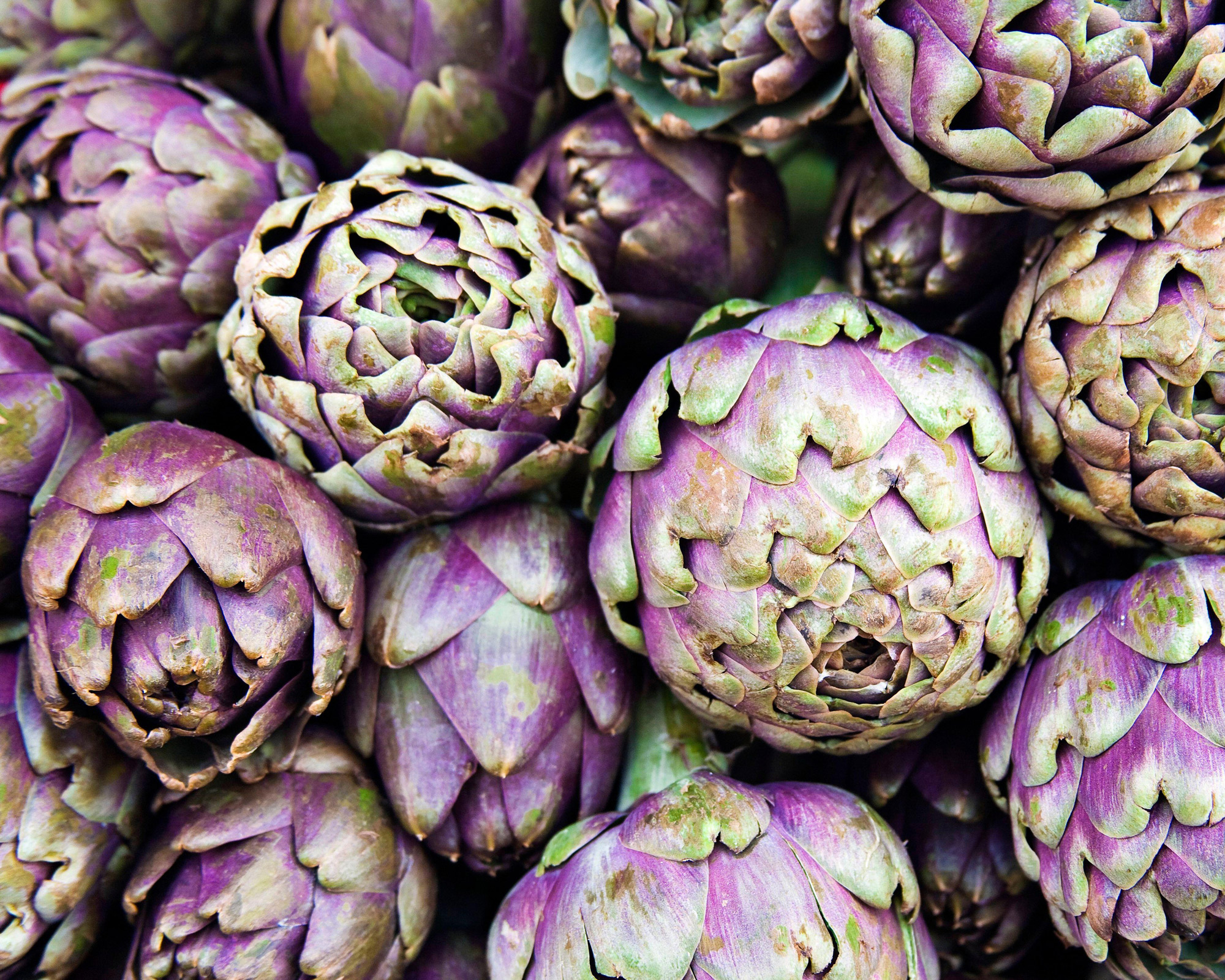
Sunshine and space may not be things we have in abundance, but if you can secure the right balance, you have a shot at growing some of the most architecturally stunning croppers in our list of vegetables to plant in March.
If you’re after low-maintenance flowerbed ideas or structure for borders, these towering edible monoliths are very easy-going once established. Flourishing in fertile, well-drained soil and sunny flower beds, globe artichokes (Cynara scolymus) are an unfussy and drought-tolerant way to add spectacle to lawn edgings and borders.
With their giant jewel-like flower buds and gargantuan grey leaves, globe artichokes are easy to propagate in March, says Lucy Chamberlain. Slice off divisions with a spade and pot them up. However, March is also your cue to start these skyscraping perennials from seed, giving ample time to develop healthy root systems. Try early ‘Violet de Provence’, tender ‘Purple Italian’ and sweet ‘Green Globe’.
Sow in pots under cover, one seed per 3in (8cm) pot of multi-purpose, then plant out in May.
For any globe-trotters with existing artichokes, Lucy also recommends a spring clean. ‘During winter, their foliage was knocked back by frost. Spruce up foliage by cutting off the old leaves to help new ones emerge.’ A good mulching of nutrient-rich organic matter like well-rotted manure will set your edible high-risers up nicely for summer.
7. Parsnips
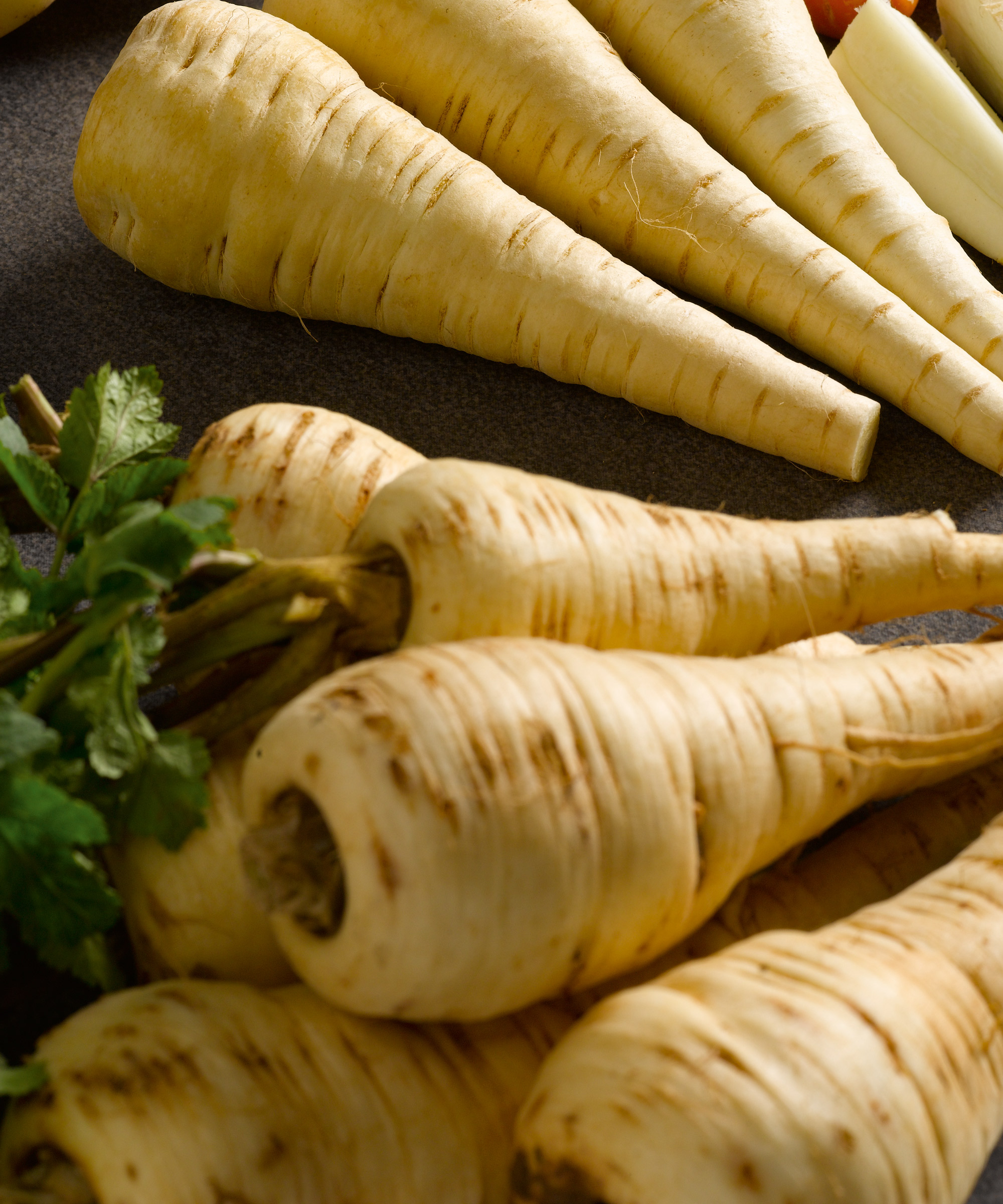
They may not be the most glamorous crops, but parsnips make a robust, hearty addition to this planting list. From high-yielding ‘Gladiator’ and super-sweet ‘Albion’ to canker-resistant ‘Tender & True’, parsnips reward the patient gardener with a flavorsome kitchen garden staple for roasts, stews and pies. The key word is ‘patience’. Unlike carrots, which can be started later, these chunky, slow-maturing roots require a good few months to bulk up, so time is of the essence.
Parsnips have a reputation for poor germination rates, but this boils down to the condition of the soil. Cold, wet soil can halt them in their tracks, but in March things are warming up on the plot. Understanding soil types will help greatly, says Amateur Gardening’s Bob Flowerdew. ‘A sandy loam suits more than heavy clay. Stone-ridden soil also induces annoying contortions, as can previous crop residues,’ says Bob. Take steps to eliminate troublesome debris now, and you won’t be pulling up wonky roots later. Mix in sharp sand and compost around and over sowings to prevent ‘capping’, where a soil crust hinders growth.
It’s best to sow seed in situ in a sunny, weed-free site, as these crops don’t like being moved around. Sow generously – but thin quickly, says Bob. Anyone who knows how to grow potatoes will find parsnips agreeable planting pals, as are peppers, celery and radishes. Bob also recommends protecting sowings with a cloche or low tunnel, which can be moved elsewhere once your plants are stronger.
8. Edamame

If you’re in search of something a little exotic for your kitchen garden, look no further than edamame. These unusual yet unassuming ‘hairy pod beans’ are some of the most satisfying vegetables you can grow.
This easy-going, nutritious crop is a true talking point for spring sowings – a nutty, buttery and sweet taste sensation, packed with protein, iron and B vitamins, plus magnesium and manganese. Anyone who knows how to grow French beans will have no problem getting to grips with these versatile cousins. Picked immature, they can be boiled or steamed in their pods and also seasoned with salt for a tasty snack.
The trick is to ensure that your soybeans (Glycine max) have a long growing season to reach their peak of flavor, says Lucy Chamberlain. Recently introduced varieties like ‘Summer Shell’ do mature quicker, but plenty of time is still required. So sow indoors, with three seeds per 3.5in (9cm) pot of compost. Ideally, keep in a heated propagator (64˚F/18˚C) to germinate. Edamame is surprisingly straightforward if you like growing vegetables in pots – just keep warm until May.
Place in pots on a sheltered patio or plant into a free-draining spot. Choose a well-drained, sunny site, planting 6in (15cm) apart to allow for plenty of well-nourished, healthy crops. Then keep well supported and water regularly for lip-smacking late-summer bean feasts.
9. Golden beets
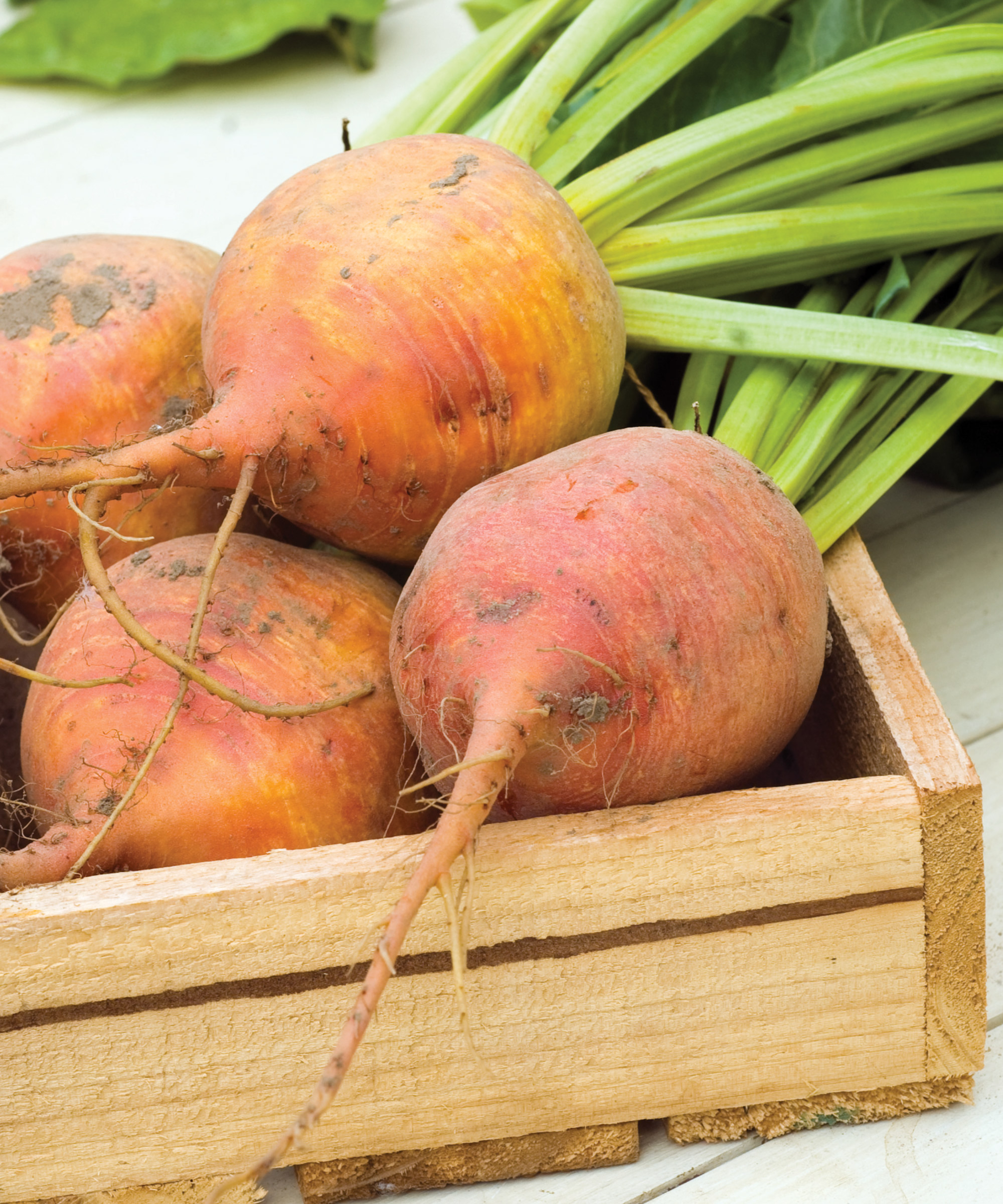
Fancy a sweet beet the color of gold? No problem, as one of our top recommendations for vegetables to plant in March just happens to be one of the most visually uplifting!
You may already know how to grow beetroot, but these beets are a real treat and if you start them in spring and plant with care, you’ll quickly be rewarded with a sunshine harvest. The ‘gold standard’ in every sense of the word is ‘Burpees Golden’, a yellow-fleshed globe that’s ready to pick 12-16 weeks from sowing. Not forgetting vigorous, copper-skinned hybrid ‘Golden Boldor’ and mild multi-tasker ‘Golden Detroit’, which also produces tasty leaves.
Even gardeners who can only stretch to small vegetable garden ideas will be able to squeeze in a few of these easy-growing sun-kissed crops. Early sowings just need the protection of cloches or fleeces if starting outdoors. They don’t need much root depth, so are just as happy grown in pots as in beds or bags. Just make sure individual plantings have 6in (15cm) space and check they have a fertile, well-drained base.
Sow little and often (between March and July) for continuous cropping as early as May and as late as October. Use an onion hoe to keep the planting sites weed-free, and be sure to avoid extremes or fluctuations in moisture.
Onions, brassicas and beans make great companion planting options for these sunny beets, which you can even store in sand after harvest for winter use. So go on, why not grow your very own pot of gold?
10. Tiger nuts

For the nuttiest entry in our list of vegetables to plant in March, we decided to include something that isn’t actually a nut at all! That’s right, folks, this is the homegrown nut-free nut that gives all the nutritional clout of the traditional snack food – without the hassle of having to wait years for the tasty, chewy payload. This easy-to-grow grassy plant’s prolific nuggets of sweet tubers take only a few months to bulk up once you’ve started them off, so what are you waiting for?
Growing your own tiger nut sedge (Cyperus esculentus) is delightfully simple – in fact, these plants are so quick to establish and take over in pretty much any environment and climate that they have often been mistaken for weeds! But as long as you are able to contain their growth, they will reward you with masses of almond-tasting goodies that can be roasted, dried or soaked overnight in water and eaten raw.
Sow seeds into big modules, then transplant seedlings into larger tubs, pot on and keep in a sunny spot, watering regularly. Walnut-sized tubers develop 8-12in (20-30cm) deep. Sown in March, you can harvest your own soft, sweet superfood treats in September. Who wouldn’t go nuts about that?

As assistant editor of Amateur Gardening magazine, Janey's gardening passion was fostered from an early age, when her amazing mum had her deadheading hydrangeas, mulching roses, and propagating strawberry plants from runners for school open days. She's also taken part in lots of conservation and rewilding projects for the RHS and TCV as a way of exploring her horticultural horizons.
